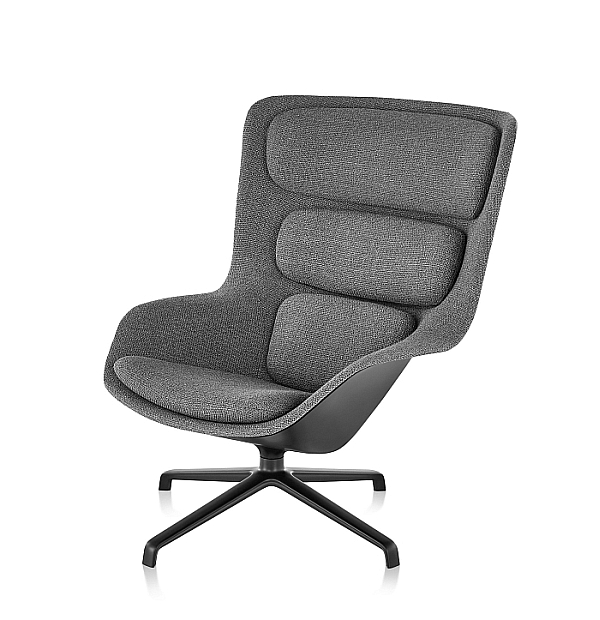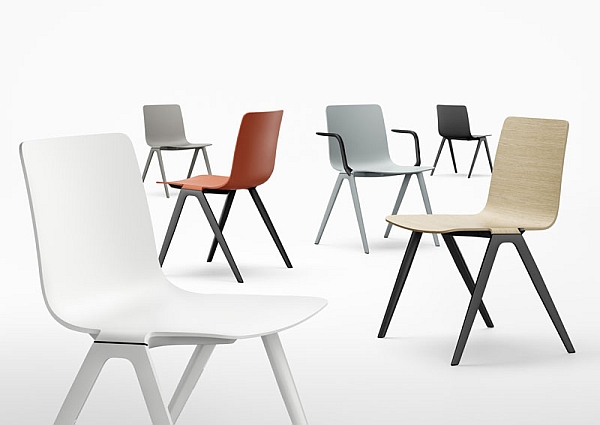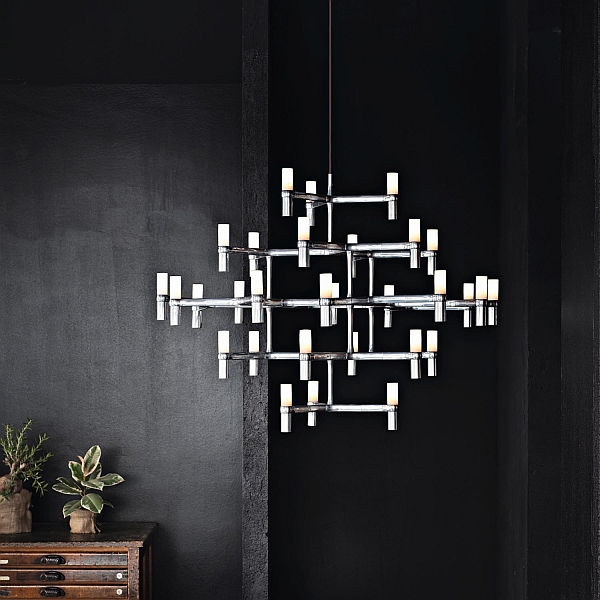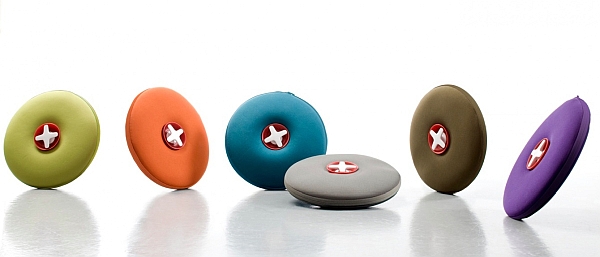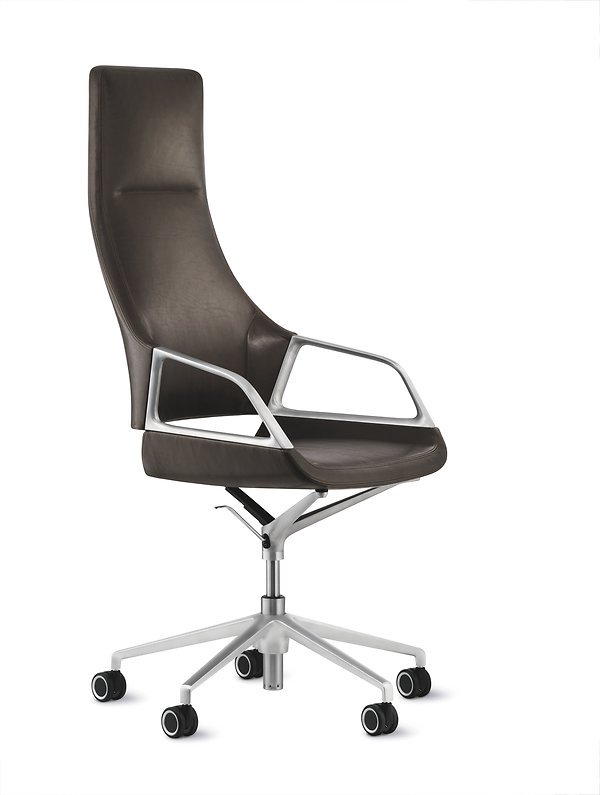Belux | Cassina | Designer | Fritz Hansen | Interview | Knoll | Office Furniture | Producer | Talking Stuttgart Creativity
Although Stuttgart based design studio Jehs+Laub are in many respects best known as the winners of the inaugural Moormann Bookinist Cup, they are also one of Germany's most prolific and successful furniture design studios.
Markus Jehs and Jürgen Laub met while studying Industrial Design at the Hochschule für Gestaltung Schwäbisch Gmünd, their friendship developed over the course of a practical semester in New York, led them to complete a joint Diploma Project and ultimately saw the establishment of Jehs+Laub in 1994, originally in Ulm before the subsequent relocation to Stuttgart.
Focussing principally on furniture and lighting design Jehs+Laub have developed a wide range of products for international manufacturers as varied as, and amongst many others, Fritz Hansen, Wilkhahn, Knoll, Belux and Cassina. Away from furniture design Jehs+Laub have also developed numerous product and interior design projects including the multi-award winning hot water bottle Pill for Authentics, the tableware collection Connect for Schönwald, the delightfully minimalist clock Stelton Time for Stelton and the global interior design concept for Mercedes-Benz showrooms.
Back at Orgatec 2012 we spoke briefly with Jehs+Laub about the differences between designing for the office and the domestic sectors and Stuttgart as a creative city. Keen to learn more, we met up with Markus Jehs to discuss studying at Schwäbisch Gmünd, twenty years in furniture design and the state of the current design industry, but began, as ever by asking how he arrived at design?
Markus Jehs: After finishing school I was uncertain as to in which direction I should go, explored various options and then arrived at design in a very general sense, explored further, initially more so graphic design and at some point it was clear to me that it was product design which interested me and then once I started studying it was very clear that I had found that after which I had been searching.
smow blog: You studied at Schwäbisch Gmünd, why, what was the motivation, or impetus, for Schwäbisch Gmünd?
Markus Jehs: To be honest, initially I didn't want to enrol at Schwäbisch Gmünd because it is very close to where I grew up; however, after visiting several colleges I decide that in terms of the basics the course at Schwäbisch Gmünd was the best one for me. At that time a lot of the teaching staff in Schwäbisch Gmünd were former HfG Ulm students, and so you had in a way a continuation of the Bauhaus philosophy, and that appealed to me. What I really appreciated was the discourse over design that occurred, both between the students and the professors but also amongst the students, it was all quite small, close, and discourse is the most important aspect of design, not just creating something that's nice to look at.
smow blog: We're assuming that at that time Schwäbisch Gmünd was still very much a classic functionalism, gutes Design, approach.....
Markus Jehs: Exactly, that was what we learnt, and then both Jürgen and myself spent a semester in New York, Jürgen with Smart Design and myself at Henry Dreyfuss Associates, and there we experienced a whole new world, they weren't going as deep, and so although as students we had in a way rejected this regimented, dogmatic German approach, having had this other experience we really learned to appreciate it, this solid German education.
smow blog: And then following your graduation you established a joint studio, why the decision to cooperate?
Markus Jehs: At Schwäbisch Gmünd we both worked regularly with Professor Knauer who taught the introductory course Grundlagen der Gestaltung, and he told us that he had never had two students who cooperated as well as we did and that we should consider working together, finding a good business partner being in his opinion harder than finding the perfect wife! After graduating we both initially did our own things, before then deciding to establish a joint studio.
smow blog: Which raises the obvious questions, why did Professor Knauer think you worked so well together? And do you?
Markus Jehs: He said that we'd get further together than each of us individually, that there would be an exponential effect. And it was the case that when we started working together we realised that we were genuinely achieving a lot more together than we were alone. With us both its all about the job in hand, it's never about who has which idea, rather one of us has an idea, the other says very directly if they find it good or not, and why, and then the discourse begins and then everything moves very quickly, because through this discourse, this explaining why you find something good or bad, listening to the other's arguments, through such a process you develop in a way a distance to the project and thus a clearer understanding of the project. And ultimately nothing leaves this office if we are not both 100% convinced it is correct. And we are both very forthright about saying if we're not happy with something.
smow blog: Which we take to mean that a large part of the development process with yourselves takes place through discussion and not necessarily quietly on the computer or sketching alone somewhere......
Markus Jehs: Exactly, the one asks the other what do you think of this, we both look at it, discuss it in an open and honest fashion and then go back to what we were doing. And such can occur every 10 minutes or so, which is also the reason we work in the same room and at the same desk, to ensure such a fluid conversation is possible.
smow blog: Working on projects means having projects, how did you go about acquiring your first contracts?
Markus Jehs: Having established the studio we had no work, were in effect unemployed, and so decided to go to Italy and to try to find some partners. And so we developed projects, made appointments with companies in Milan, travelled down to Milan, presented our work and eventually were able to find the first manufacturers.
smow blog: Why this focus on Italy? Did it have to be an Italian manufacturer, or was it just a case of naively thinking you had the best chances in Italy?
Markus Jehs: Naturally we were naive, but for us it was the case that the Italians were the leading producers, Milan was the centre of the industry and if we wanted to achieve success then for us that was only possible with Italian companies. In addition, for us the Italians approached the subject very emotionally, with a lot of understanding and gut feeling.
smow blog: And for you is Italy still the most important furniture design nation, or.....?
Markus Jehs: Today I wouldn't necessarily say that is the case, today everything is more international. In our case, we work today with all manner of companies, in America as well as Europe, and for me the mix is what makes it interesting, because you are continually learning. We always strive to develop, to learn, and for example American companies are focussed on different markets than European manufacturers, or the Scandinavians have their own way of assessing products, and to experience how they all work and the different views of the same subject is very enriching. The Milanese architect and designer Cini Boeri once said to us that as studio we are much more international than the Italians, who generally sit in Milan and design for Cassina, Cappellini, Artemide, Kartell, and all the rest, and this view was interesting because one does tend to look at Italy and think "Wow, look how international they all are!", but in practice many Italian designers are based in and focussed on Milan, and of course once a year the industry comes to them and so why should they go elsewhere!
smow blog: Coming back to the 1990s, having decided to focus on Italian producers, where did you then begin?
Markus Jehs: The one company with whom we definitely wanted to work with was Cassina, for us Cassina are and were the pinnacle of Italian design, and were the company with the best craftsmen and the best product developers. And so that was where we started. Naturally they turned us down, and told us that they work with the most famous designers and didn't need our designs. Then however the first commercial products we realised were with the Italian lighting manufacturer Nemo, who were then taken over by Cassina. And so we mentioned to Nemo that we'd like to work for Cassina, were introduced to Umberto Cassina, and that was our way in, and the first products with Cassina then made things much easier and opened doors, not only with the Italian manufacturers, but also with for example, Fritz Hansen and eventually then the German manufacturers.
smow blog: And then having secured those first contracts how long did it take before you could say you were "established" as a studio?
Markus Jehs: The first products for Nemo were so 1997, 1998, however that income which you earn from license fees in the first few years is not to live enough on, and so before you are actually established as a design studio it takes about 10 years, so before you have the security that you can live from your work, that manufacturers will contact you, that you will receive commissions and don't need to go knocking on doors quite as much. And that is something we hear from more or less all our established colleagues, that it takes so ten years. Gott sei Dank! we were so naive at the beginning, and simply hadn't understood what it all entailed, or that the chances that everything would work out positively are relatively low.
smow blog: Which we assume means that the first few years were a mix of non-design work and freelancing?
Markus Jehs: No, no, not at all, we decided from the beginning to concentrate fully on developing our projects. Design is a very concentrated process and not one where you want to be regularly distracted through for example developing a project for someone else as a freelancer, or doing some completely unrelated work, because then it all takes even longer.
smow blog: And then as you say after ten years came a degree of security, is that then something which comes through the mass of products one has in production, or does one need a big seller?
Markus Jehs: I would say it is more a case that after ten years one has the experience and thereby has developed a better feeling that you are developing the correct product at the correct time, so objects that will actually be sold in shops or which architects actually want for their projects, and it takes bit of time to develop this feeling, but then once you have developed it you can tell quite quickly if a project will be successful or not and so work more efficiently.
smow blog: But does that also mean that you are now in a position where you can focus on selecting projects which interest you, or is there still an economic necessity to do as much as possible?
Markus Jehs: We don't do projects for the money alone, rather ask ourselves does it interest us, does it bring us further, will we enjoy it and most importantly is their a good relationship with the client. Often there isn't any money at the beginning. Die Zeit, for example, once sent us a list of product types which are formally unattractive but yet whom no one appears interested in improving. They had approached numerous international studios with a request to develop some new ideas for such product types and planned to publish some of the best, most interesting, results. We decided to spend five minutes brainstorming each product type and see if any ideas arose. If so we would contribute, if not, then not. We did then have a couple of ideas which we developed on the computer and sent Die Zeit as rendered images. One of the objects was a hot water bottle which was then published in Zeit Magazine, and soon afterwards people started calling, asking to buy it, to which we had to reply, "Sorry it doesn't exist!" Subsequently we contacted Authentics explained the situation to them, they agreed to develop and produce it, and today market it very successfully as Pill. But as a project it started without any thought of money and purely as an interesting sounding project.
smow blog: But when money is discussed, as a studio do you request development payments ahead of starting any work?
Markus Jehs: That is always dependent on various factors; however, we prefer not receive such development payments because when the manufacturer turns round later and says that for whatever reason they don't want to release the project, then we can take it elsewhere. It is our work. However if we've received money for developing it, then it is morally more difficult, yes we could still take it elsewhere, but.... And so for us it is preferable to simply remain with the licence payments.
smow blog: Changing tact slightly. We assume that over the years many a student has undertaken an internship with yourselves. Given your experience over the past two decades, do consider that students today are being properly prepared for that what awaits them in their professional careers?
Markus Jehs: We have had interns here from all over the world, and for me they generally aren't that well prepared because for me the discourse over design, the discussion culture around design, the arguing for design, isn't given enough priority in design education, rather they are all trained more or less as soldiers, perfect in all manner of computer programmes and competent in the realisation from ideas, but in terms of developing concepts, analysing situations and drawing the correct conclusions, that doesn't seem to have a priority. One has the impression that the colleges need to recruit as many students as possible so that they receive as much funding as possible, but in my opinion it would be better if there were fewer graduates but better trained.
smow blog: Which we assume means that for you if the discourse isn't encouraged and promoted amongst students there is a risk that in the long term product design will suffer....
Markus Jehs: It will become more superficial! One sees that today at trade fairs, there is only very occasionally anything genuinely interesting or exciting. In the past one always had definite breaks which changed things, but today such events which allow one to view things differently or from another perspective, they occur only very rarely. Today a lot of design is simply just decoration.
smow blog: Which does raise the question as to if there isn't a responsibility on yourselves to do more teaching and to discuss such directly with students and to encourage more discourse?
Markus Jehs: In principle we do see a responsibility to pass our experience and understanding, but in terms of time we simply currently cannot afford that. We have to regularly turn down projects as it is and so with the best of intentions, the time simply isn't there. But what we do try and do is to encourage the development of such skills within those students who come here, and we do notice that when you start talking with students about projects that a genuine interest is there and one can have good discussions.
smow blog: And is there also a risk that you as a studio become complacent in such a market?
Markus Jehs: There is a definite risk that we could become too comfortable, that we lean back and say "OK, while everything is working so well, lets just continue in the same vein regardless", but we are concious of that fact and don't that, as a studio we want to continue to develop.
smow blog: Which means that for yourselves, the future is furniture......
Markus Jehs: Yes, furniture is our passion, but we are always open for anything interesting, anything new. For example, through the cooperation with Fritz Hansen we were given the opportunity to create a suite for an Ice Hotel, which obviously was something completely new for us and was a lot of fun. We are naturally inquisitive and enjoy doing things from which we previously had no inkling, where we can approach it completely naively. That's always fun and rewarding.
More information on Jehs+Laub and their work can be found at http://jehs-laub.com/
